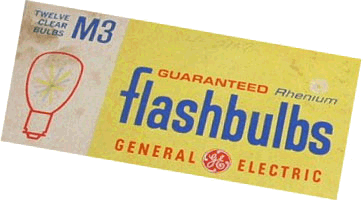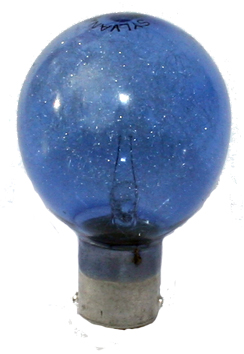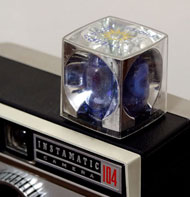Different light
equipments using “Flash
Light
Powder” were proposed.
Firms like Kodak sold flash lamps ignited with a gas flame. Agfa offered a
combination of a tray for the flash powder with a gas lighter pistol.
 One thing is sure, the
handling of the flash powder was dangerous.
One thing is sure, the
handling of the flash powder was dangerous.
In 1925, a German
scientist - Paul Vierkötter – invent the first electric flash bulb. His
invention was improved and
patented by another German scientist –
Johannes Ostermeyer.
The first company to
produce flash bulbs
(Sashalite bulbs)
was General
Electric UK
in 1927. The bulbs gave
light by burning a mesh of thinnest crumpled aluminum wires and foils in an
instant, ignited by the power of a simple battery.
The bulbs could be used only once. Immediately, they replaced the unwieldy
and dangerous
earliest magnesium
light equipments.
This process evolved
during the WW II with the invention of electronic flashes giving light from
electronic gas-discharge tubes.
It became common in amateur
photography electronic flashguns only in the 1960s, wh en small light
transistors and thyristors were invented.
en small light
transistors and thyristors were invented.
However, electronic
flashguns did not immediately replaced the flash bulbs. All the popular
cameras produced from 1960 to the mid-1970s still used multi-bulb flash
systems, disposable plastic cubes with four bulbs (Magicubes), or disposable
flip-flashes with more bulbs in one piece.
Today, modern cameras
have inbuilt flash units.



Nombre
de visiteurs